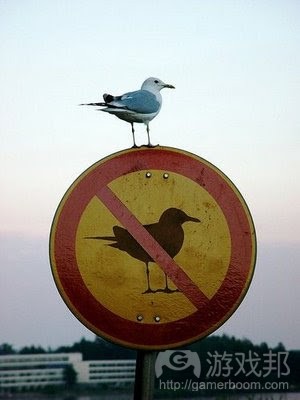论述杰出游戏设计师的21种重要行为
作者:Mike Darga
由于读者阅读本博客的目的是想要成为更杰出的设计师,因此我决定基于文章目标进行分类,而非“战斗”或“MMO”之类的标签。
在制作囊括文章内容的系列标签的过程中,我整理出优秀设计师的若干重要行为。
我想过将此称作“优秀设计师所具备的技能”或“优秀设计师存在的特质”,但我更喜欢“行为”一词,因为这说明,这些是设计师能够有意识频繁采取的举措,同时也表明,即便是经验丰富的设计师也需要牢记这些内容。
1. 承认失误
清楚设计缺乏可行性或某个构思有欠妥当非常重要。这还包括辨别游戏中需要修复的问题。
2. 重视玩法
最具创新性的机制、最引人注目的小说、漂亮的美术内容及令人心碎的故事如果没有服务于玩法,那也无法造就一款杰出作品。从思维过程及你希望玩家在敌人、地点或故事中表现出的战略反馈着手,然后从此逐步向前推进。如果你只能记住文章内容的一点,那就记住这点。
3. 保持连贯性
如果游戏没有向他们呈现连贯反馈,玩家便无法学习如何体验你的游戏。如果游戏呈现连贯的机制、剧情、玩法和故事叙述,那么玩家潜意识里将觉得游戏更有趣。
4. 保持高效性
锁定效率是个积极反馈循环,益处颇多。投入一周时间研究可用的开发工具或编写合理的设计文档能够节省几个月或者甚至是几年的开发时间。
5. 保持有条不紊
游戏设计不是一门科学,但以系统方法看待能够帮你省掉很多麻烦。清晰分类和数据术语能够帮助玩家更轻松地学习游戏,同时将开发过程变得更简单。以系统方法处理问题能够让你更高效地解决问题,清楚问题已得到解决,或者这些本来就是合理的问题。
6. 挑战设想
挑战设想是创新的根源。为什么某热门功能在其他游戏中如此成功?你是否真的需要它?基于自动导航进行游戏设计不是明智之举。情境在优秀设计中非常重要,可以考虑之前设计师没有做过的功能或决定,然后自己权衡其中利弊。即便你最终是在模仿另一游戏,但你会发现自己是出于合理理由复制适当元素。
7. 合作
除若干著名隐士外,当前的游戏设计师需要非常善于在大型开发团队中任职。良好合作关系能够带来有效的沟通,有效接收反馈信息,知道何时抛弃自己的想法,采用他人的看法。通常,这一合作过程会包含你的玩家、游戏评论员,或者甚至是游戏竞争者。糟糕设计师不一定是糟糕合作者,但糟糕合作者几乎都是糟糕设计师。
8. 定义术语
什么是游戏设计、趣味性或游戏元素?游戏设计师源自不同背景,倾向在此过程中引入不同的术语和行话。我们需要花时间把握他们谈论的是什么。即便设计师采用相同术语,他们通常以此指示不同的东西。除此之外,这些术语的意思会因团队和游戏而异。
9. 不要恐慌
随机的下意识游戏设计通常是糟糕设计,即便你非常幸运,它没有给你带来任何伤害。在依然无需任何代价的情况下,积极更新设计文档或电子公告。否则,你通过匆忙做出决策而省下几天时间的做法最终将致使你需要多付出几周或几个月时间。
10. 实际动手操作
将自己变得更善于设计的最佳做法是,投入很多时间落实设计。真正的麻烦之处在于细节。你也许撰写出1000页设计文稿,但设计技能毫无提高,因为唯一的学习方式是经历一番艰苦,查看哪些部分可行,哪些不可行。
11. 提高易用性
从某种程度上看,良好易用性是最容易实现的优秀游戏设计目标。我们可以通过很多方式将游戏变得更具可用性,因此这比将游戏变得更富趣味性(游戏邦注:这更主观、更棘手)更容易把握。虽然重新制作机制和玩法总是涉及风险元素,但提高易用性能够确保游戏质量得到提高。
12. 了解行业
思考商业模式、发行日期、竞争和营销活动并非游戏设计的一部分,但若你希望游戏能够获得成功,持续带来创收,这非常重要。
13. 了解你的用户
你需要在玩家希望体验的游戏类型和你希望体验的游戏类型之间做出艰难决策。这需要你是一位优秀的游戏设计师。你还需要倾听玩家的需求,分析什么能够真正让他们感到开心。这需要你是一位杰出的设计师。
14. 清楚自己的目标
给所制作的游戏设定一整套常见目标和价值标准是制作优质游戏的首要步骤,当然还没有人这么做。没有这给你的其他决策奠定基础,你也许会将魔力8号球当作是自己的首席设计师。清楚你所制作的是什么游戏对于保持连贯性和了解用户来说非常重要。
15. 从一切事物中学习
游戏设计是博学者的天然职业。讽刺的是,将游戏视作唯一兴趣的人士通常不善于制作游戏。在制作游戏时,从建筑学到哲学,再到动物学,所有内容都派得上用场。
16. 保持客观性
和普遍观点相反,优秀设计并非围绕争辩观点和个人品味。它主要涉及寻找实现系列预定目标的最佳方式。若你不知道自己制作的是什么游戏,你很难做出客观的设计决策。
17. 研究游戏
由于你所能想到的构思大多都已某种形式得到落实,因此体验游戏是最简单、最详细的原型测试方式。这包括他人制作的作品及自身团队所开发的游戏。没有什么比犯下相同错误更糟糕。
18. 教授玩家
游戏需教授玩家如何完整通过连贯的奖惩游戏机制及清晰UI和指南。你的学习曲线需要覆盖所有玩家的技能水平。给按照预期完成操作的玩家一定奖励也非常重要。当玩家操作有误时,这通常是因为游戏允许或者甚至是鼓励他们这么做。
19. 深谋远虑
很多设计在游戏宣传或包装介绍中听起来颇具可行性,但当玩家真正进行尝试时就发生故障。允诺问题的解决方案通常会导致游戏其他部分出现新问题。花时间思考各决策的影响。这还包括设计出不会中途出现崩溃的可扩充系统(游戏邦注:在它们需要修改或扩充的时候)。
20. 运用心理学
游戏设计就根本来说就是门心理学。通过用键盘打字,设计师能够创造出抽象的数据组,这被进一步编辑成更抽象的刺激因素,当玩家接触到以及就这些刺激因素做出回应时,他们脑中会形成愉快或不愉快的思维过程。若你不了解用户及其思维方式,那么要在他们脑中输入笑容将非常困难。
21. 采取更明智的工作方式
想象不同公司的两个团队制作同款游戏。团队A投入很多时间及更多资金,没有辞职或一命呜呼的成员大多都已心生不满。而团队B在很短时间内、投入更少资金,制作出同款游戏,团队感到无比喜悦并准备投入下款作品。如何制作游戏和制作什么游戏一样重要,要知道有许多采用糟糕流程的游戏在其尚未完工前就已失败。
游戏邦注:原文发布于2009年3月3日,文章叙述以当时为背景。(本文为游戏邦/gamerboom.com编译,拒绝任何不保留版权的转载,如需转载请联系:游戏邦)
21 Behaviors of Great Designers
by Mike Darga
Since the purpose of reading (and writing) this blog is to become a better designer, I decided to group the posts based on their goal, rather than tags such as “combat” or “MMOs.”
In the process of generating a list of tags that were general enough to cover all the content of this blog, I ended up with a list of the behaviors I think are most important in a great designer.
I thought about referring to these as “skills great designers posess,” or “traits great designers exhibit,” but I like “behaviors,” since it emphasizes the fact that these are all things that anyone can consciously do more often. It also serves as a reminder that even highly experienced designers have to remember to do them.
1 – Admit Mistakes
It’s important to know when your design isn’t working or one of your ideas wasn’t well thought out. This also includes identifying problems in your game that need to be fixed.
2 – Aim For Gameplay
All the most innovative mechanics, compelling fiction, beautiful art, and heartbreaking narrative in the world can’t make a good game if it’s not in the service of gameplay. Start with the thought process and tactical response you want the player to have to an enemy or location or story, and work backward from there. If you only ever remember one thing I write on this blog, please make this it.
3 – Be Consistent
Players can’t learn how to play your game if the game doesn’t present them with consistent feedback. Games are also subconsciously much more enjoyable if they present game mechanics, fiction, gameplay, and narrative that are all unified.
4 – Be Efficient
Focusing on efficiency is a positive feedback loop, and the benefits can be huge. One investment of a week working on a usable development tool or a well-written design doc can pay off over months or even years of development.
5 – Be Methodical
Game design isn’t a science, but approaching it in a systematic manner can prevent all sorts of difficulties. Clear categories and terminology for data help players learn the game much more easily, as well as making the development process much simpler. Approaching problems in a methodical manner helps to solve them more efficiently and to know that they’re really solved, or that they were even valid problems to begin with.
6 – Challenge Assumptions
Challenging assumptions is the seed of innovation. Why is a popular feature so successful in other games? Do you really need it at all? Game design on autopilot is never a good thing. Context is incredibly important in good design, but it’s also valuable to consider a feature or decision as though no designer had ever made it before, and weigh out the pros and cons for yourself. Then, even if you do end up mimicking another game, you’ll know you’re copying the right element, for the right reason.
7 – Collaborate
Aside from a few notable hermits, game designers these days have to be great at working in a large team of developers. Good collaborators communicate well, accept feedback, and know when to throw away their idea in favor of someone else’s. Often, the collaborative process also includes your players, a game reviewer, or even your game’s competitors. Bad designers are often bad collaborators, but bad collaborators are almost always bad designers.
8 – Define Terms
What are the elements of game design, or of fun, or of a game itself? Game designers come to the discipline from all sorts of backgrounds, and tend to bring lots of different terms and jargon to the process. We need to take the time to be informed as to what people are actually talking about. Even when designers use the same terms, they often use them to mean wildly different things. On top of that, these terms can change their meaning from team to team and game to game.
9 – Don’t Panic
Haphazard, knee-jerk game design is always bad game design, even when you’re lucky enough that it doesn’t come back to bite you. Iterate on design docs, or on a whiteboard, when it’s still free. If not, the days you saved by rushing decisions will cost you weeks or months down the road.
10 – Get Your Hands Dirty
The best way to become better at designing is to spend a lot of time actually implementing your designs. The devil really is in the details. You can write 1000 design docs without ever improving as a designer, because the only way to learn is to find out the hard way which parts of those designs worked and which didn’t.
11 – Improve Usability
In a way, good usability is the lowest-hanging fruit of good game design. Because there are often obvious right answers when it comes to making a game more usable, it’s much easier to get right than making a game fun, which is much more subjective and finnicky. While reworking mechanics and gameplay always involves an element of risk, improving your game’s usability is an almost guaranteed gain in quality.
12 – Know The Industry
Thinking about business models, release dates, competition, marketing and the like aren’t really part of game design proper, but they are important if you want your game to succeed and your paychecks to continue.
13 – Know Your Audience
You’ll eventually need to make some hard decisions between the kind of game your players want to play and the kind of game you’d want to play. This takes a good designer. You’ll also have to listen to what your players demand and parse out what will actually make them happy. This takes a great designer.
14 – Know Your Goals
Establishing a solid set of common goals and values for the game you’re making is the first and most basic step to making a good game, so of course almost nobody ever does it. Without this foundation to provide context for all of your other decisions, you may as well make a Magic 8-Ball your lead designer. Knowing what game you’re making is especially important for being consistent and knowing your audience.
15 – Learn From Everything
Game design is a natural career for polymaths. People whose only interest is games are ironically not very good at making them. Everything from architecture to philosophy to zoology can come in handy when making games.
16 – Stay Objective
Contrary to popular belief, good design isn’t about arguing opinions and personal taste. It’s about finding the best way to achieve a set of predefined and agreed-upon goals. It’s impossible to make objective design decisions if you don’t know what game you’re making.
17 – Study Games
Since almost anything you can think of has been attempted in some form already, playing games is the easiest, most detailed form of prototyping there is. This includes games someone else has made, as well as teams your own team has already made. There’s nothing worse than repeating the same mistakes.
18 – Teach Players
Games need to teach players how to play them through consistent game mechanics that punish and reward, as well as clear UI and tutorials. Your learning curve has to account for the skill levels of all the players who comprise your audience. It’s also very important to make sure your game is actually rewarding players for the behavior that you intended it to. When players are misbehaving, it’s almost always because the game allowed or even encouraged them to.
19 – Think Ahead
Many designs that sound completely feasible in a game pitch or on the back of a box completely break down once someone actually tries to play them. Promising solutions to problems often cause a whole new set of problems elsewhere in the game. Take some time and work out the ramifications of each decision. This also includes designing extensible systems that won’t break down the road when they need to be modified or expanded.
20 – Use Psychology
Game design, at its most basic level, is psychology. By typing on a keyboard, designers create an abstract set of data, which is compiled into an even more abstract set of stimuli, which creates a pleasant or unpleasant thought process inside the head of a person exposed and responding to those stimuli. It’s very difficult to type a smile into someone else’s brain if you don’t understand a little something about people and how they think.
21 – Work Smarter
Imagine that by some incredible fluke, two teams at different companies produced the exact same game. Team A spent many years, way too much money, and whatever fraction of their team hasn’t quit or died already is in a fairly grouchy mood. Team B made the same game in a shorter amount of time, for less money, and has a happy team ready to make the next game. How you make the game is almost as important as what you make, especially since so many games with bad process fail before they’re even finished.(Source:mikedarga)











































 闽公网安备35020302001549号
闽公网安备35020302001549号